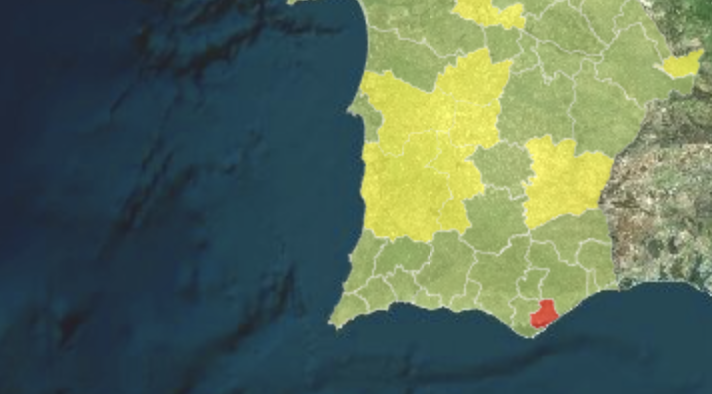When deciding to move abroad, it is important to learn about the quality of the water. Find out if it is drinkable, hard and rich in lime, or soft. Portugal has a well-developed drinking water distribution and sanitation network, and water quality checks are carried out regularly. The percentage of drinking water in mainland Portugal is 98.66%, a value considered excellent. What is the quality of the water in Portugal? How hard is drinking water? Can you drink tap water in Portugal? I’m Lisbob, the expat assistant, and I will tell you all about the quality and hardness of drinking water in Portugal, and what to do in case of issue.
Water distribution and treatment network in Portugal
The Portuguese domestic water distribution network is one of the oldest in Europe. The symbol of this historic network is the Aqueduto das Aguas Livres in Lisbon, whose construction was completed in 1799.
However, in the early 90s, the country was lagging behind the rest of Europe in terms of service. to the population in the field of water supply and wastewater treatment. Most of mainland Portugal now has access to drinking water and a wastewater treatment system.
Can you drink tap water in Portugal?
The quality of tap water is excellent in Portugal. According to figures from official surveys from Ersar (Portuguese water network), the percentage of drinking water in mainland Portugal is 98.66%, making it a benchmark at European level. However, in detail, many Portuguese departments have "satisfactory" drinking water quality, and some "unsatisfactory".
Here is the map of the water quality by Portuguese districts and departments (click on the image):
In general, therefore, it is possible to drink tap water in Portugal without risk. However in some cases it is possible to detect an odor, a taste, a color or even a turbidity in the water, which can create a perception of rejection.
These characteristics can come from several causes:
• Minerals naturally present in water;
• Treatment processes used to make water drinkable;
• Public network repair and maintenance actions;
• Degradation of the house's plumbing.
Some of the most common situations are analyzed below.
White or cloudy color
The possible appearance of white color in tap water is due to the existence of air dissolved in the water, with the formation of small bubbles. It is mainly caused by pressure fluctuations in pipes or tanks which momentarily make the water whitish.
This appearance is one-off and temporary and does not affect the quality of the water. By letting the water sit for a while in a clear glass, it becomes clear again.
Brown or reddish color
The possible appearance of a brown or reddish color in tap water is due to the presence of minerals such as iron and / or manganese. Changes in water temperature or pressure and velocity can cause brown turbidity, which is caused by the formation and entrainment of iron deposits in metal pipes.
It is possible to minimize the situation by letting the water run for a while until it comes out clear again. Washing clothes with water should be avoided under these conditions.
Chlorine odor or taste
The possible appearance of a chlorine smell or taste in tap water is a result of the water disinfection process. Chlorine is added to the water to eliminate bacteria and other microorganisms that may contaminate the water in the public network. For this reason, a residual quantity of chlorine is kept in the network up to the tap.
Thus, it will be possible to perhaps notice a slight odor or a slight taste of chlorine when drinking tap water. However, these small amounts of chlorine in the water guarantee its disinfection and do not present any danger to health.
To get rid of the smell of chlorine, you should simply let the water sit for about half an hour or keep it in the refrigerator, properly packed.
It’s OK to drink tap water in Portugal
Water hardness
The hardness of water is caused by the presence of dissolved salts, mainly calcium and magnesium. Water is considered hard when there are significant values of these salts and soft when it contains small amounts. Hard water may not dissolve soap, detergents, or shampoos well, making it more difficult to foam and can more easily cause lime deposits in equipment. Lime deposits on small appliances are easily removed with a solution of white vinegar.
For washing machines, there are anti-scale tablets on the market which are added to the detergent and prevent the formation of these deposits.
On the map below it is possible to see the classification of the hardness of the public water supply by the municipality of mainland Portugal, according to the data obtained in the water quality control carried out in 2015 (You need to click on the picture).
What to do in the event of...
Water cut :
If you are warned of a water supply interruption, it is advisable to estimate how much water you will need for the expected duration. If you have not been informed in advance and notice a water cut, make sure that :
All the taps in your home are turned off.
Electrical appliances that use water (washing machines, dishwashers, etc.) are switched off.
To find out when the water is expected to be restored, contact EPAL’s customer service department.
If your area is not affected by a power cut, check whether :
The interruption affects the whole building or just your home.
The safety taps near the meter are open (turn counter-clockwise to open).
If the water does not return after these checks, contact EPAL’s customer service department.
Pressure problems :
In the event of insufficient or inconsistent water pressure, please contact EPAL’s customer service team.
Low pressure is often due to an ageing domestic network that reduces the efficiency of the distribution. It is advisable to keep your pipes in good condition, in particular by replacing older galvanised steel or lead pipes.
Water leaks :
A poorly closed tap or flush can cause a significant loss of water. On average, this can represent :
2 m³ per month for drops.
10 m³ per month for a 2 mm trickle.
100 m³ per month for a 6 mm trickle.
These losses increase your costs, so if you suspect a leak :
Turn off all the taps, leaving the safety tap open.
If the dial (red for litres and decilitres) moves, this indicates a leak in the taps or pipes.
In the event of a visible leak or pipe rupture, close the safety valve immediately and proceed with the repair.
For any repairs requiring the use of the main valve or the branch suspension valve, contact EPAL, as only their service is authorised to carry out these operations.
If you are unable to stop a leak, contact EPAL or, in an emergency, the fire brigade (Regimento dos Sapadores Bombeiros) on 213 422 222.













